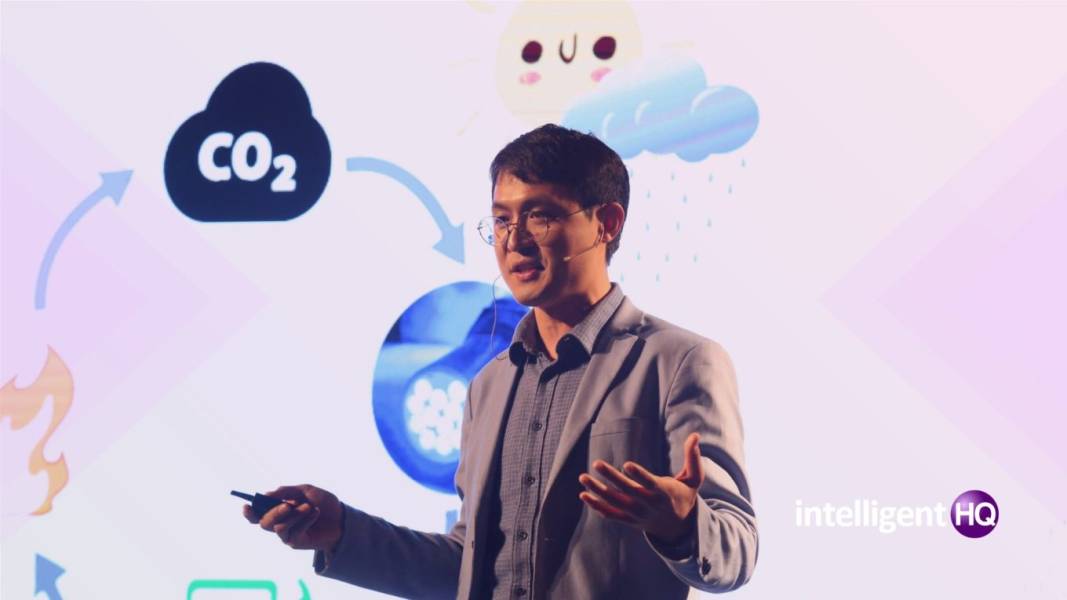The technology breakthrough that our climate change-affected world is needing may be just around the corner. Xiangkun (Elvis) Cao of MIT presents his newest discovery: a solar-powered CO2 capture device. This solar thermal makes room for cleaner air by reducing carbon dioxide in the atmosphere. It could even work on Mars!

This device separates and pulls CO2 out of the air, using renewable energy methods to cleanse the environment, create fresh fuel and consequentially affect our planet’s high temperature.
This device separates and pulls CO2 out of the air, using renewable energy methods to cleanse the environment, create fresh fuel and consequentially affect our planet’s high temperature. Xiangkun (Elvis) Cao, now a Schmidt Science student at MIT, made a device with such technology called the HI-Light Solar Thermal Chemical Reactor while pursuing a Ph.D. degree with David Erickson at Cornell. This high-tech device won Cao’s team the SAE’s Create the Future Design Contest award in 2017.
The inspiration behind this invention was the Erickson Lab’s previous work on biofuel production from algae. “For algae cultivation, only the top layer accesses light,” said Cao. “So, our lab engineered waveguides for even light distribution within the whole reactor for better algae production.” Cao’s team decided to create a similar system using the same method.
Cao aimed to create a scalable reactor for photothermic catalytic CO2 conversion. To summarize the process, the glass rod waveguides transmit the light irradiation that gets into the reactor with unique scattering surfaces to enable even irradiation. A catalyst covers the surface of these rods. The purpose of this catalyst is to break CO2 and other reactants, producing renewable solar fuels.
Cao and his solar reactor technology have come a long way ever since 2017, “For me, I feel like the Create the Future award was the starting point for my professional career,” he said. The industrial partner for the HI-Light effort, Dimensional Energy, was a finalist for the Millon Carbon XPrize. In 2019, Forbes featured Cao as one of their “30 Under 30” individuals, specializing in the field of Energy in North America. The reactor progressed in terms of efficiency, scalability, and how manufacturing with the passing of time.
This reactor has abilities beyond just producing fuel. The same system is usable for other solar-driven catalytic processes. It is noteworthy that we, humans are not the only ones to benefit from this technology.
“It could potentially do a very good job on Mars,” added Cao. “There’s far more CO2 there than on Earth, and there’s evidence of subglacial liquid water on Mars. When you feed CO2 and H2O into the reactor, you could produce methanol to power a spacecraft and oxygen for the first Martians.”
Closer to home, Cao is working on pathways to integrate various carbon dioxide reduction and utilization processes.
“For example, taking pure CO2 out of the air — with some certain method — can be costly. Instead, if we create concentrations of carbon at 1,000 parts per million (compared to air’s 420), the result is usable for greenhouses for a very low cost. “1,000 is not good for human health, but tomatoes really like it,” said Cao. “There are many existing carbon capture and carbon utilization processes out there. If we can think outside the box to bridge carbon capture and utilization, we can create new exciting economic opportunities while working to mitigate global climate change.”
Cao started to look into political issues and believes everyone should work together to create an efficient roadmap for carbon capture, and apply it immediately, without wasting any time. “The United States just banned the EPA from banning emissions from power plants — that doesn’t make sense at all,” he says. “Right now we need a global system. We don’t have a global Carbon XPrize.”
“The problem is that our time is very limited to deal with the massive CO2 emissions,” said Cao. “I’m thinking about the whole field: with the technologies out there already, what can we do right now, not 20 years later with higher tech, but at this very moment.”

Hernaldo Turrillo is a writer and author specialised in innovation, AI, DLT, SMEs, trading, investing and new trends in technology and business. He has been working for ztudium group since 2017. He is the editor of openbusinesscouncil.org, tradersdna.com, hedgethink.com, and writes regularly for intelligenthq.com, socialmediacouncil.eu. Hernaldo was born in Spain and finally settled in London, United Kingdom, after a few years of personal growth. Hernaldo finished his Journalism bachelor degree in the University of Seville, Spain, and began working as reporter in the newspaper, Europa Sur, writing about Politics and Society. He also worked as community manager and marketing advisor in Los Barrios, Spain. Innovation, technology, politics and economy are his main interests, with special focus on new trends and ethical projects. He enjoys finding himself getting lost in words, explaining what he understands from the world and helping others. Besides a journalist, he is also a thinker and proactive in digital transformation strategies. Knowledge and ideas have no limits.






























